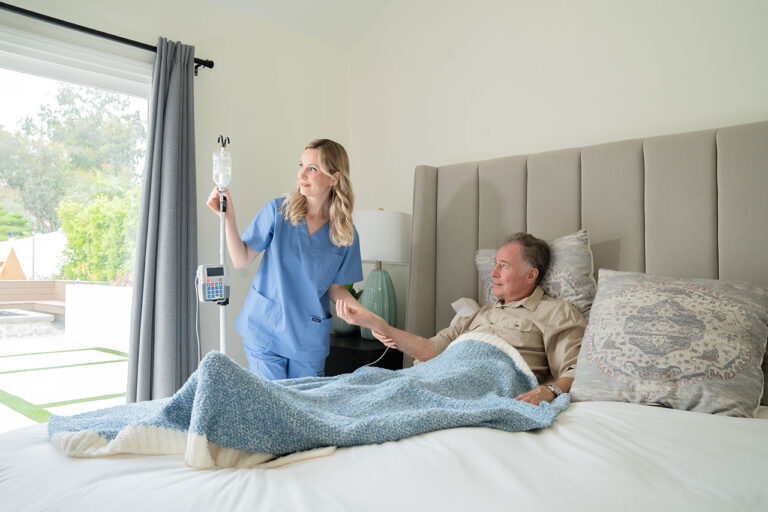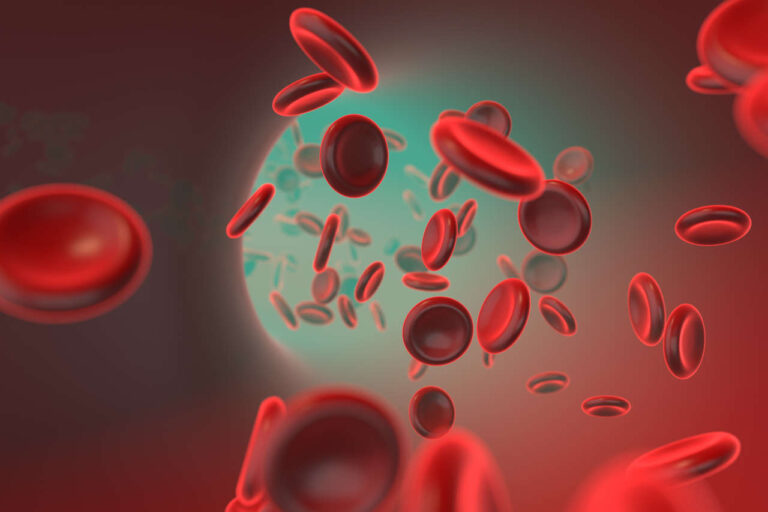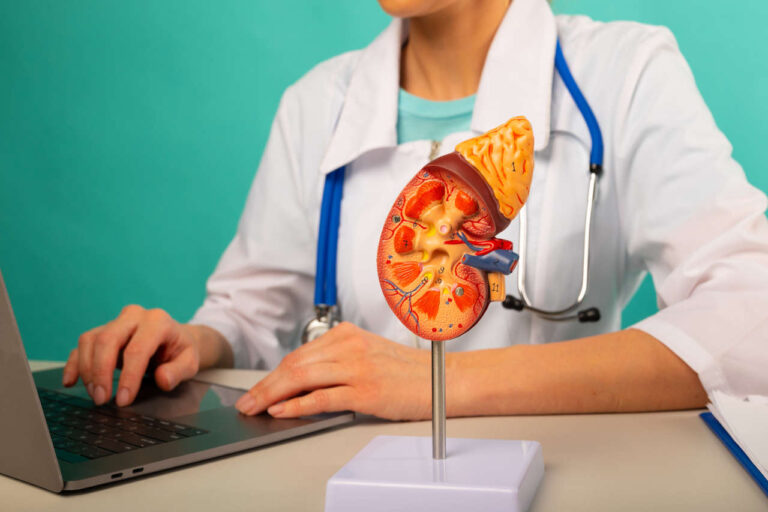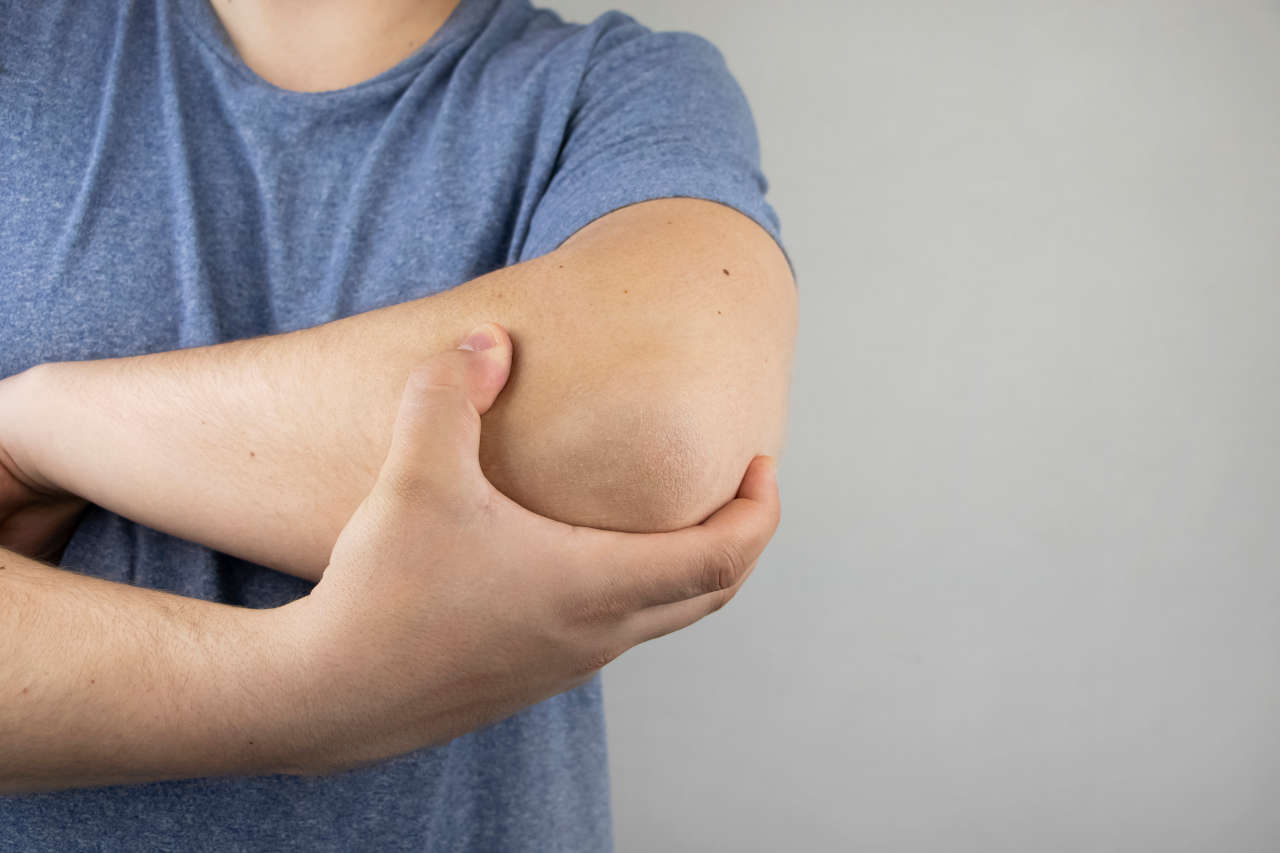
Síndrome miasténico de Lambert-Eaton (LEMS) es un trastorno autoinmune poco común que afecta 2,8 millones de personas En todo el mundo. En Estados Unidos, alrededor de 400 personas son diagnosticadas con LEMS.
Consulte a un especialista en IgIV
La mejor infusión de IgIV en casaEl LEMS es un trastorno autoinmune poco común de la unión neuromuscular causado por un ataque inmunitario. El daño inmunitario en la unión neuromuscular afecta la transmisión de señales entre los nervios y los músculos voluntarios, y causa debilidad muscular, fatiga y otros síntomas.
Varios casos informes y controlado aleatorio ensayos han demostrado los efectos beneficiosos de la terapia con IgIV en pacientes con EMLE. Pacientes con EMLE Experimente una mejora muscular significativa después de recibir tratamiento con IgIV como tratamiento de primera línea.
Este artículo analiza el papel del sistema inmunológico como causa del LEMS y cómo la terapia con IgIV puede ayudar.
¿Cómo el sistema inmunológico causa LEMS?
Generalmente, cuando una persona sana desea realizar una actividad, su cerebro envía señales a los músculos a través de los nervios. La comunicación entre los nervios y los músculos se produce mediante la acetilcolina (una sustancia química que indica a los músculos que se contraigan), que se libera al activarse los canales de calcio dependientes de voltaje (CCVV) en los extremos de las terminaciones nerviosas.
Entonces, cuando se activan los canales de calcio dependientes de voltaje (VGCC), la acetilcolina se libera de las terminaciones nerviosas y se une a los receptores de la fibra muscular para provocar la contracción muscular.
Sistema inmunitario y síndrome miasténico de Lambert-Eaton (LEMS)
Las personas con síndrome miasténico de Lambert-Eaton (SMLE) tienen autoanticuerpos (anticuerpos producidos por el sistema inmunitario contra células sanas) que bloquean estos canales de calcio en las terminaciones nerviosas. Como resultado, la menor cantidad de acetilcolina liberada por los nervios es insuficiente para provocar una contracción muscular normal.
Cómo la terapia con IgIV puede ayudar a las personas con síndrome miasténico de Lambert-Eaton
La terapia con IgIV es Considerado un tratamiento de primera línea para LEMS en personas con patrones refractarios de debilidad. o cuando la terapia tradicional no funciona bien. Por ejemplo, una informe de caso El estudio de una mujer de 34 años con debilidad progresiva de las extremidades que recibió tratamiento con IgIV mostró una mejoría en la fuerza muscular.
De manera similar, según otro informe de casoUna mujer de 65 años con cáncer de pulmón de células pequeñas que tenía debilidad profunda y progresiva en las extremidades inferiores experimentó una mejoría en la fuerza muscular después de 3 semanas de tratamiento con IgIV.
Aunque el mecanismo exacto de la IgIV no está claro, los investigadores creen que la IgIV puede ayudar a aliviar los síntomas del LEMS a través de varios mecanismos relacionados, que son los siguientes:
Neutraliza los efectos de los autoanticuerpos
En pacientes con LEMS, los autoanticuerpos producidos por el sistema inmunitario bloquean principalmente los canales de calcio dependientes de voltaje para impedir la liberación de acetilcolina. Como resultado, los músculos no se contraen correctamente.
La terapia con IgIV funciona para neutralizar el efecto de estos autoanticuerpos En pacientes con EMLE. La IgIV impide que los autoanticuerpos se unan a los canales de calcio dependientes de voltaje. Esto ayuda a mejorar la función muscular en pacientes con EMLE.
Inhibe las células productoras de autoanticuerpos
Las células B, que generalmente producen anticuerpos sanos normales cuando están hiperactivas, comienzan a producir autoanticuerpos.
La terapia con IgIV suprime la actividad de las células B y previene la producción de autoanticuerpos. Esto reduce el nivel de autoanticuerpos en el suero y mejora la fuerza muscular en LEMS.
Reduce la inflamación secundaria
Las propiedades antiinflamatorias de la terapia con IgIV ayudan a reducir cualquier inflamación secundaria que pueda surgir en pacientes con LEMS durante ataques autoinmunes.
Obtenga asistencia para el copago de IgIV
Habla con un especialista¿Cómo se administra la terapia con IgIV a pacientes con IgIV para el síndrome miasténico de Lambert-Eaton?
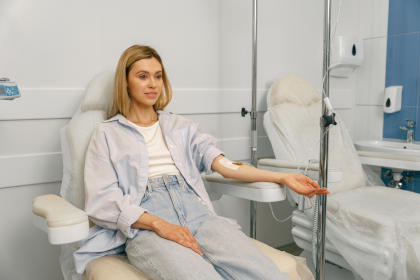
Los pacientes con síndrome miasténico de Lambert-Eaton (SMLE) reciben terapia con IgIV cuando presentan una forma refractaria de SMLE. Se administra mediante infusión intravenosa con una dosis recomendada de 2 g/kg durante 2 a 5 días. El médico determinará la duración de las infusiones según la respuesta del paciente al tratamiento.
La IgIV puede tardar entre 2 y 4 semanas en mejorar la debilidad.
¿Se utiliza la IgIV como tratamiento a corto plazo para el LEMS?
Los estudios muestran que la terapia con IgIV se puede utilizar como tratamiento a corto y largo plazo en pacientes con LEMS, especialmente cuando los medicamentos inmunosupresores no son efectivos.
Además, los pacientes pueden experimentar diversos efectos secundarios asociados con la IgIV, como náuseas, dolor de cabeza o, en raras ocasiones, coagulación durante el tratamiento. Por lo tanto, se recomienda consultar a un profesional de la salud si los síntomas persisten o empeoran.
Resumen
Terapia con IgIV Se utiliza para tratar los síntomas de progresión rápida del síndrome miasténico de Lambert-Eaton (SMLE). En pacientes con SMLE, la IgIV neutraliza los autoanticuerpos que atacan las terminaciones nerviosas e inhibe la actividad de los linfocitos B autorreactivos. Mediante la modulación del sistema inmunitario, la IgIV ayuda a reducir la gravedad de los síntomas y mejora la fuerza muscular en pacientes con SMLE.
REFERENCIAS:
- Keogh, M., Sedehizadeh, S. y Maddison, P. (2011). Tratamiento del síndrome miasténico de Lambert-Eaton. La Base de Datos Cochrane de Revisiones Sistemáticas, 2011(2). https://doi.org/10.1002/14651858.CD003279.pub3
- Illa, I. (2005). IgIV en miastenia gravis, síndrome miasténico de Lambert Eaton y miopatías inflamatorias: estado actual. Revista de Neurología, 252(S1), i14–i18. https://doi.org/10.1007/s00415-005-1104-5
- Bain, PG, Motomura, M., Newsom-Davis, J., Misbah, SA, Chapel, HM, Lee, ML, Vincent, A. y Lang, B. (1996). Efectos de la inmunoglobulina intravenosa sobre la debilidad muscular y los autoanticuerpos anticanales de calcio en el síndrome miasténico de Lambert-Eaton. Neurología, 47(3), 678–683. https://doi.org/10.1212/wnl.47.3.678
- Peterlin, L., Flood, W., y J. Kothari, M. (2002). Uso de inmunoglobulina intravenosa en el síndrome miasténico de Lambert-Eaton. Revista de la Asociación Americana de Osteopatía, 102(12), 682–684. https://pubmed.ncbi.nlm.nih.gov/12501987/
- Pascuzzi, RM, y Bodkin, CL (2022). Miastenia grave y síndrome miasténico de Lambert-Eaton: nuevos avances en diagnóstico y tratamiento. Enfermedades neuropsiquiátricas y su tratamiento, 18, 3001-3022. https://doi.org/10.2147/NDT.S296714
- Jayarangaiah, A., Lui, F. y Kariyanna, PT (23 de octubre de 2023). Síndrome miasténico de Lambert-Eaton. StatPearls – NCBI Bookshelf. https://www.ncbi.nlm.nih.gov/books/NBK507891/#:~:text=Lambert%2DEaton%20myasthenic%20syndrome%20(LEMS,with%20small%2Dcell%20lung%20cancer.
- Okada, A., Koike, H., Nakamura, T., Motomura, M. y Sobue, G. (2015). Eficacia de la inmunoglobulina intravenosa para el tratamiento del síndrome miasténico de Lambert-Eaton sin anticuerpos anticanales de calcio dependientes de voltaje de tipo P/Q presinápticos: Informe de un caso. Trastornos neuromusculares, 25(1), 70-72. https://doi.org/10.1016/j.nmd.2014.08.006
- Anwar, A., Saleem, S., Ahmed, MF, Ashraf, S. y Ashraf, S. (2019). Avances recientes y opciones terapéuticas en el síndrome miasténico de Lambert-Eaton. Cureus. https://doi.org/10.7759/cureus.5450
- Kesner, VG, Oh, SJ, Dimachkie, MM y Barohn, RJ (2018). Síndrome miasténico de Lambert-Eaton. Clínicas neurológicas, 36(2), 379–394. https://doi.org/10.1016/j.ncl.2018.01.008




